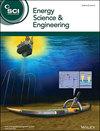A Systematic Literature Review: An Input-Transformation-Output Model for Coal-Fired Plant Operations
Abstract
Purpose
This study identifies and organizes improvement strategies that enable flexible operations in coal-fired power plants through the lens of an input-transformation-output (ITO) model.
Design/Methodology/Approach
A rigorous systematic literature review (SLR) process, consisting of ten steps in three stages, was used to extract and synthesize relevant studies from 2016 to 2023. These findings were structured within a customized ITO framework to categorize interventions across operational and strategic levels.
Findings
The review synthesized 24 high-quality studies, revealing 13 thematic strategies that enhance flexibility in coal-fired operations. These include, among others, optimizing boiler systems, integrating renewable energy, improving control systems, and upgrading water-steam cycles. The ITO model illustrates how external environmental drivers, operational interventions, and performance metrics interrelate to influence plant flexibility. Notably, strategies such as advanced control algorithms, predictive maintenance, and retrofitting of pressure components were shown to reduce emissions, improve ramp rates, and extend plant life while supporting grid stability.
Practical Implications
The study provides a structured model that practitioners can use to guide retrofitting and operational strategies across input, transformation, and output stages of plant functionality. These insights support informed decision-making for improved energy efficiency, sustainability, and cost-effectiveness in legacy coal infrastructure.
Originality/Value
Unlike traditional literature reviews, this study presents a multi-dimensional, systems-based analysis that maps improvement strategies to plant operations. The resulting ITO framework serves as a blueprint for achieving operational flexibility, especially relevant to countries like South Africa grappling with energy transitions.





 求助内容:
求助内容: 应助结果提醒方式:
应助结果提醒方式:


